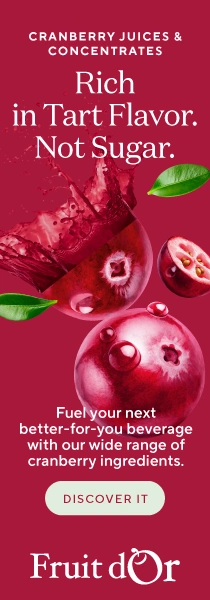Lightweight PET Adds Value to Sutter Home’s 187-mL Servings
Sutter Home began using Ball’s custom-designed PET wine bottles in select markets in 2005 and has gradually increased distribution since then. The bottles preserve the look of the original glass container and run on the winery’s existing filling lines.

18/07/09 Sutter Home Winery is now using PET bottles from Ball Corp. for all of its 187-mL wine bottles sold throughout the U.S. The bottles feature Plasmax, a transparent, internal silicon oxide (SiOx) barrier-coating technology from KHS Plasmax GmbH that protects the wine inside the bottle, while providing exceptional clarity. According to Ball, because it is easily removed during the recycling process, the coating does not contaminate the PET recycling stream.
“Sutter Home made the decision to switch to plastic wine bottles because of our ongoing efforts to become more environmentally friendly,” says Wendy Nyberg, senior director of marketing for Sutter Home. “The plastic bottles weigh only one-sixth what the glass bottles weigh, and they’re much smaller, so consumers get the same amount of wine in a smaller, unbreakable, less-wasteful and recyclable bottle.”
Sutter Home began using Ball’s custom-designed PET wine bottles in select markets in 2005 and has gradually increased distribution since then. The bottles preserve the look of the original glass container and run on the winery’s existing filling lines. Sutter Home has been pleased with consumer acceptance of the plastic wine bottles as well as the entrée they provide into venues that do not allow glass because of the potential for breakage.
“At Sutter Home, we are committed to environmentally responsible practices in every aspect of our winemaking operations, including packaging,” says Nyberg. “Switching to PET has increased convenience for consumers and has allowed us to offer a package with some great environmental benefits. We know that the Plasmax barrier coating Ball provides will keep our wine fresh, and that the bottles can still be easily and effectively recycled.
“Producing the PET bottles generates 60-percent fewer greenhouse gasses than producing the glass bottles, plus the smaller PET bottles allow us to use less fuel and gain supply-chain efficiencies because we get more bottles on a pallet and on a truck.”
Ball is sole PET supplier in NA for Plasmax
To support the national rollout of Sutter Home’s PET wine bottles and additional applications of the Plasmax barrier technology in North America, Ball now operates two InnoPET Plasmax 12D machines—one in its Chino, CA, manufacturing facility, and another in Ames, IA.
According to Ball, it is the only PET bottle manufacturer to offer Plasmax barrier coating technology in North America. The bottle manufacturer has worked with the technology in its commercial manufacturing operations for more than four years and is successfully employing it with bottles for beer, flavored alcoholic beverages, juices, and teas, with shelf-life results that meet or surpass those provided by alternative barrier solutions.
Plasmax provides an FDA-compliant, enhanced passive barrier for oxygen sensitive products. This ultra-thin (less than 100-nm) material is transparent and resists cracking, abrasion, and delamination. Because Plasmax does not degrade over time, the length of time bottle inventory can be stored is not limited by the barrier material, notes Ball.
A recycling study conducted according to the European Petcore protocols demonstrated that Plasmax is removable during the recycling process and does not negatively affect any of the test requirements. These results were shared with the Association of Postconsumer Plastic Recyclers (APR), the trade industry representing more than 90% of the post-consumer plastic processing capacity in North America, and it raised no objections to the results.















